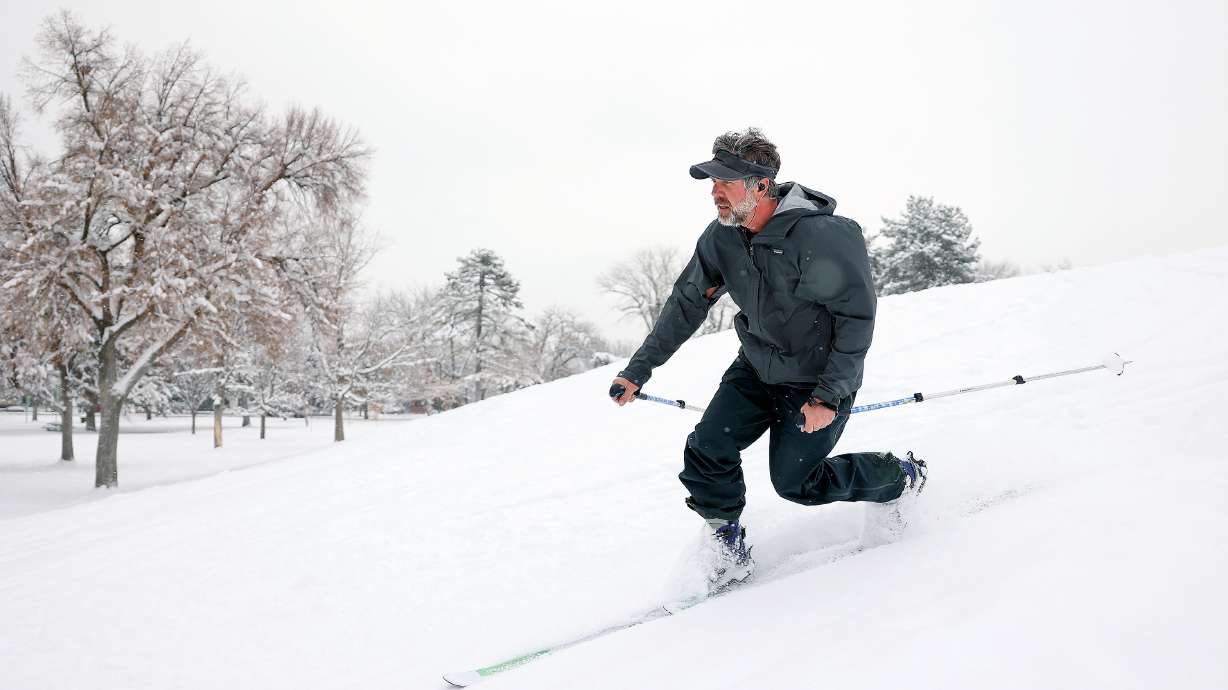Estimated read time: 3-4 minutes
This archived news story is available only for your personal, non-commercial use. Information in the story may be outdated or superseded by additional information. Reading or replaying the story in its archived form does not constitute a republication of the story.
SALT LAKE CITY — Snow is clearly on Gov. Spencer Cox's mind this week, as he's kicked off two of his more recent media appearances by expressing his appreciation for the freshly fallen snow.
The National Weather Service reports that Alta received at least another 4 inches overnight, tacking onto the 4 feet of snow that it has already received this week. Many mountain locations have also received at least 2 feet of snow since Sunday, especially in the Wasatch Mountains.
"Obviously, this has been very good for our snowpack," Cox said, at the beginning of his monthly PBS news conference Thursday.
The statewide snowpack currently contains 5.9 inches of water collected since the 2023 water year started on Oct. 1, according to Natural Resources Conservation Service data accessed Thursday afternoon. That figure is about 151% of normal for the halfway point in December. There's variation among Utah's 16 snowpack basins but every basin is faring well, bouncing between 118% and 193% of normal.
Overall, precipitation levels in the mountains are also above normal for this point in the year. All of these figures matter because Utah's snowpack collection and subsequent spring runoff account for about 95% of the state's water supply. The water in the snowpack helps refill the state's reservoirs, which have been depleted by drought. The entire system is currently listed at 43% full, per Utah Division of Water Resources data.

That said, it's only a strong start. Utah's snowpack is listed at 37% of the median peak, which means the statewide figure needs to nearly triple the collection since the start of October to reach the normal of the past few decades.
This is why Cox is hopeful that the stormy trends will continue as the season progresses.
The good news is Utah is well ahead of schedule. There are 110 days left before peak season in early April. The bad news is that Utah's winters often feature ebbs and flows, so for every pocket of frequent storm activity — such as the past two weeks — there are pockets where nothing happens. These lulls can stall snow collection, or worse, cause premature melt.
"As good as it's been, if you look at the charts, we're really in the early stages of the snowpack year," Cox said. "The most critical months are actually February, March and April, when that snowpack really climbs. So while we're really excited and grateful, we still have a long way to go to have enough snowpack to fill our reservoirs and pull us out of this drought."
It's not just this season, either. Because of the severity of Utah's current drought — mixed in with the two-decadeslong "megadrought" — experts have repeatedly cautioned that it will take many good snowpack seasons to help all reservoirs recover from the effects of drought.
As they say, it typically takes as many years to leave a drought as it takes to enter it.
That's why the governor reiterated many of the same messages since taking office, calling on Utahns to be mindful of how they consume water.
"I urge you to conserve water and to continue to pray for snow and rain," he said. "We need all the help we can get."










